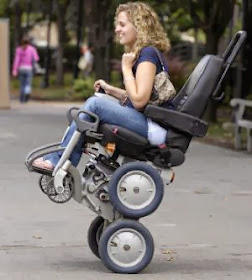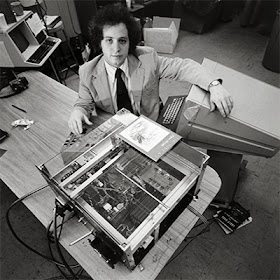 There have been many pictures floating around on the
internet of creative costume ideas for people that use wheelchairs.
There have been many pictures floating around on the
internet of creative costume ideas for people that use wheelchairs.
Here are a couple of websites that have some great compilations of Halloween costumes:
 These costumes are fun to look at and obviously many of them took a considerable amount of time to make. So, how does someone go about creating their own unique
design? Check out the Christopher
& Dana Reeve Foundation’s Paralysis Resource Center’s page for some more
ideas and specific instructions on wheelchair costume design. This page will inspire you to re-create one of these amazing
costume ideas or to come up with your own desgin idea. On this page, there is even a how-to
video where they show the viewers how to create a flower-in-a-garden costume for a young girl that uses a wheelchair.
These costumes are fun to look at and obviously many of them took a considerable amount of time to make. So, how does someone go about creating their own unique
design? Check out the Christopher
& Dana Reeve Foundation’s Paralysis Resource Center’s page for some more
ideas and specific instructions on wheelchair costume design. This page will inspire you to re-create one of these amazing
costume ideas or to come up with your own desgin idea. On this page, there is even a how-to
video where they show the viewers how to create a flower-in-a-garden costume for a young girl that uses a wheelchair. Another great site that includes links to instructions for making some unique costumes a reality is called DIY
– 25 Halloween Costumes for Wheelchairs.
Another great site that includes links to instructions for making some unique costumes a reality is called DIY
– 25 Halloween Costumes for Wheelchairs.
Furthermore, we also found a couple of Halloween costume ideas for
someone that uses a walker. Click here for instructions on how to make a KingKong (with the Empire State Building) costume or click here to make a Cloudy With a Chance of Meatballs costume.
Finally, we also found this site, Coolest
Wheelchair Costumes, that includes even more links to instructions -including some preparation tips- should you decide that you are ready to create a similar design yourself.
Have you incorporated AT into your Halloween costume? Or, have you thought of a great costume that uses your AT? Tell us about it! Write in the comment box below to share your Halloween AT costume idea.
Enjoy the photos and have a happy and safe Halloween
everyone!










